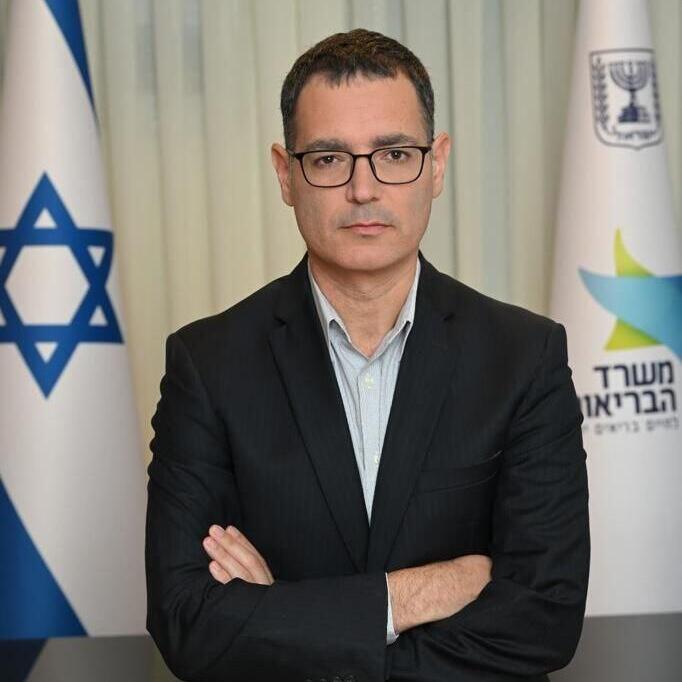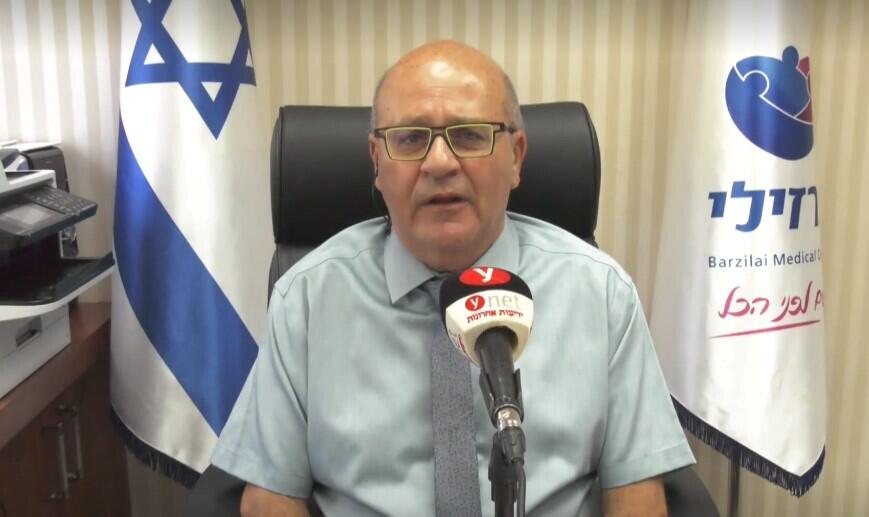Getting your Trinity Audio player ready...
WARNING: This story contains graphic images and accounts. Discretion is advised.
“An ordinary, regular person can’t even imagine what we saw,” says Dr. Ricardo Nachman, head of Israel's National Center of Forensic Medicine, recalling the disaster’s initial hours. “On TV, they said there were 20-30 bodies. We already knew that we were talking about 300-400 bodies, and the number going up and up.”
He describes the demonic images he saw: “An adult and a child stuck together and burnt with a metal wire around them. We saw killing by decapitation, faces lacerated by AK-47 gunshots, gunshots straight to the eyes, stab wounds all over bodies, people bound hand and foot.
6 View gallery
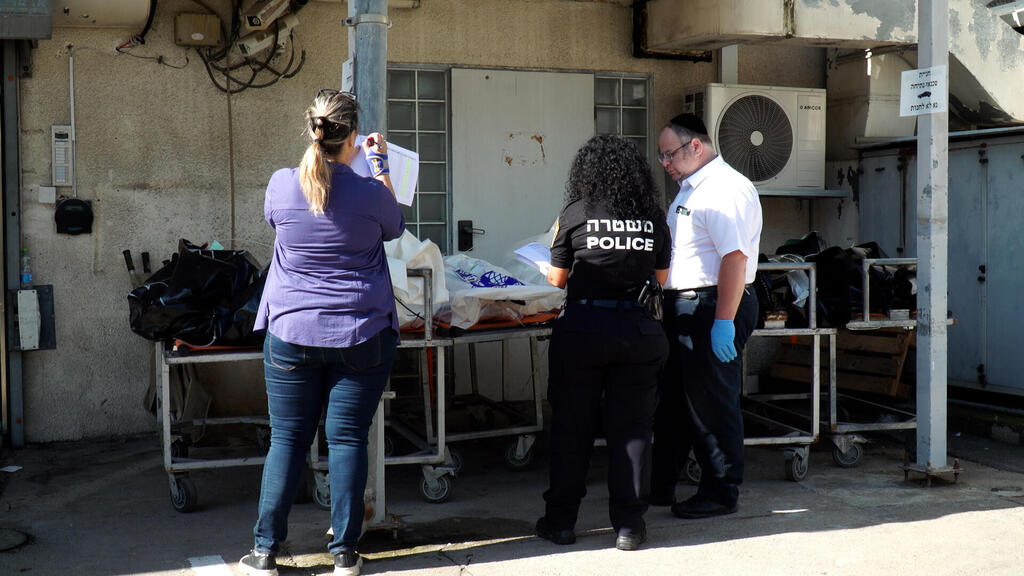

Bodies collected at the Forensic Medicine Institute in the first days following the massacre
(Photo: Eli Dasa)
They were there on October 7. They saw the horrors up close, unmediated. The doctors, nurses, social workers, lab workers, forensic scientists and security officers who treated the wounded from the massacre in Gaza border towns, thousands of dead and wounded, working to identify the victims and advise families on the fate of their loved ones.
Now, as part of a special testimonial collection initiated by Health Ministry Director-General Moshe Bar-Siman-Tov, in an effort to document the events of October 7 from the caregivers’ perspective, they’re telling the public what they saw and heard on that horrific day.
Dr. Chen Kugel, director of the National Center of Forensic Medicine recalls those dramatic hours. “In the afternoon, we convened all the institute’s employees and said we needed to plan for a mass casualty incident as in all previous mass casualty incidents, it was assumed that’s what would happen. We thought 100 and said, ok, we can prepare for 100,” he said. "When it became clear that hundreds more bodies would be coming in, we started organizing bringing in containers, until it was decided to transfer the bodies to the Shura (military) camp."
He describes the abuse the victims had endured, some of them burned, and working in such difficult conditions. “When you’re with a body, you disassociate. It’s a kind of defense mechanism. I don’t think about the person. I’m looking for evidence, how to identify them, what happened to them, and whether I can find the precise mechanism for their death and how I properly record it. When I read about it, when I hear their family talk about them, crying, I suddenly connect to the person they were.”
6 View gallery
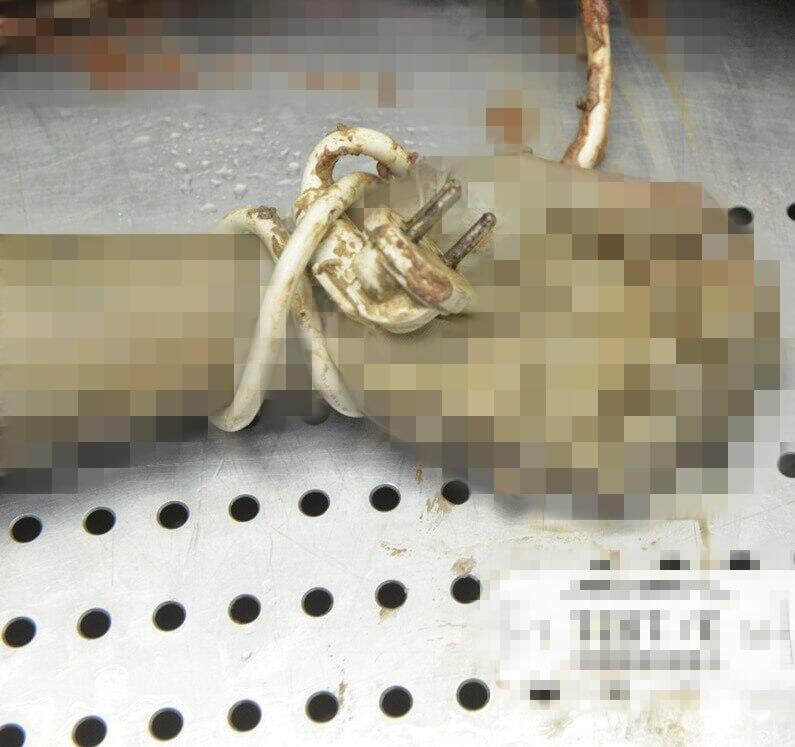

Among the findings at the institute: the victims were sometimes tied with electrical cables
(Photo: Avigail Uzi)
Michal Peer, forensic anthropologist at the institute, says she was getting dozens of bags of bones, sometimes on a daily basis. “It could be a bag of burned bone remains along with fragments of wall and floor from the house, telephones, and jewelry. There was one case I think I’ll remember for the rest of my life: We were looking for a 12-year-old girl, and there were so many bones of terrorists, that we had to go through them one by one to look for some sign of this girl. In the end, we found one small bone of a 12-year-old. When we found it, I hope it helped the girl’s family.”
'We’d never seen bodies in this condition'
Dr. Nurit Bublil, head of the DNA laboratory at the National Center for Forensic Medicine describes images and smells that never go away. “In the first days, samples were collected from whole bodies. A few days later, body parts were found. Four or five days after that, we were getting samples that had rotted after being in the field, out in the sun for some time. We couldn’t work. We couldn’t breathe it in. You can’t get away from that smell. The burned bodies, lumps of coal. There was no way of telling whether it was even something human. A lump of coal that had been a person. And it’s not like we hadn’t seen burned bodies in the past, but neither I nor my colleagues had ever seen bodies in this condition."
From the morning of October 7, Israel’s health system was mobilized to treat victims of the massacre and incidents in its wake. The Health Ministry has embarked on a project to historically document the events of those days, as described by the medical teams operating in hospitals, in the field and at the Center of Forensic Medicine.
After months of documenting detailed testimonials of the ministry’s spokesman and communications team, the Health Ministry is publishing these chilling testimonies of the medical teams as part of a digital archive that will allow future generations to learn and understand precisely what we went through here exactly a year ago.
This special project, which is still ongoing, presents the testimonies of the forensic institute personnel who identified the bodies, and testimonies of Soroka, Barzilai, Wolfson, Sha’are Zedek medical centers, as well as the Health Ministry headquarters entrusted with managing the treatment of the dead and wounded.
“Ahead of the anniversary of the horrific disaster and massacre that kicked off the war, we’ve decided to create a database of testimonies of the medical teams who treated, and are still treating, many of those wounded, both physically and mentally," Bar-Siman-Tov says.
"Teams from across Israeli society have shown true courage and dedication working to save lives. This testimonial database, and more testimonies are still being added, aims to conserve the collective and historic memory of the events in the health system so that the public both in Israel and across the world can access it directly.
“The health system’s human capital is one of the sources of its strength. The devoted teams risked their lives to provide care for victims of the disaster and the war that broke out in its wake. There’s enormous value in making their testimonies accessible. The health system looks forward to the hostages’ speedy return, the residents going back to their homes and the good physical and mental health of those injured."
'You could still see the life in their faces'
“Nothing in the 25 years I’ve been here was in any way similar to what happened on October 7,” says Tal Hayun, 47, director of nursing at Soroka's Surgery and Recovery Room.
6 View gallery
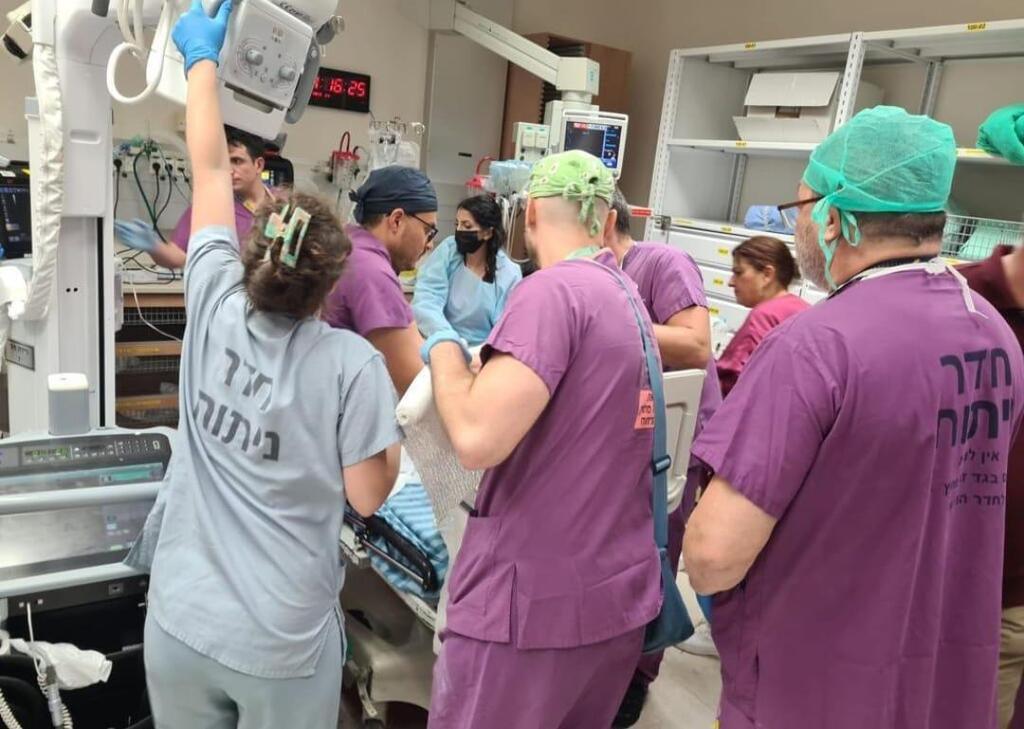

Soroka Medical Center teams fighting to save the lives of wounded in first hours following massacre
(Photo: Soroka Medical Center)
“We didn’t know what was going on outside. The only sign that anything out of the ordinary was going on, was the mixture of injured people showing up: children, adults, women from the festival in high heels, soldiers with arms or legs missing and a girl shouting, looking for her parents.
"The sight of a cart packed full of arms and legs is ingrained in my mind. Beyond the medical aspect, your feelings start creeping in. Glancing at the phones of the dead and wounded in that cart, I looked at one of them, and the screen read ‘Mom’ with a red heart, and it was ringing and I wondered whether I should answer it. But I didn’t know who the phone belonged to, so I just stood there, staring at these phones.”
Dr. Ori Galante, a senior doctor at the Soroka Medical Center ICU unit says, “I noticed that one of the curtains in the trauma room was drawn. I went to see what was going on and whether they needed help. They’d put everyone who had been killed there. I found my neighbors from all the surrounding communities there, my children’s friends, all that age – beautiful, good-looking, strong. It was hard to believe. You could still see the life in their faces. It went on like this until nightfall.”
How do you tell someone her baby was born dead?
“I had a patient, who had sadly been shot in the stomach, come in for an emergency C-section,” says Dafna Gross Orian, Soroka Medical Center social worker. "How do you tell her, that she’d undergone a C-section with a dead baby? How do you tell someone a thing like that? Life won’t go back to how it was, in any way.”
She continues to describe the horrors she saw: “When they opened the curtain, I saw dozens of bodies. I looked at the pile of bodies and the manager said to me, ‘Dafna. You need to open a public information center’. I never thought I’d have to deal with anything like this. Within minutes, we were getting hundreds of phone calls. We started meeting the public. On Sunday, we met thousands of people for whom we had no information. We later realized that anyone who wasn’t here had been murdered or kidnapped.”
The Barzilai Medical Center team also joined the testimonies project. “Ambulances began flooding in, both military and civilian," hospital director Prof. Hezi Levi recalls.
He says that the first to arrive were those shot at close range, suffering heavy, uncontrollable bleeding. He says that the hospital was inundated with patients to the point that he asked the Health Ministry to send some to secondary hospitals in central Israel. At this stage, the morgue was completely full. "By the evening, we had 110 corpses, two blood-soaked children on a stretcher, a father and son.”
Countless civilians poured into the information center, hoping to identify their loved ones. “They were all anonymous. We didn’t know who they were. Families were showing up in droves at the information center we had set up. They were all in a terrible emotional state.”
6 View gallery


Stretchers stained with blood and bullets—evidence of what occurred on October 7
(Photo: Barzilai Medical Center)
“There’s a picture I can’t get out of my head. It’s a Thai worker getting out of a car, and he has no nose, no mouth, nothing,” says Boaz Kappach, 63, head of Barzilali Medical Center’s transportation department. “Every moment, bodies, vehicles with bodies, families were arriving at Barzilai Medical Center. The whole square was full of bodies. The refrigerators were full of bodies, the rooms were full. At some stage, I just couldn’t. There were (the bodies of) two children, one on top of the other on a stretcher, I asked ZAKA to take them away. Ninety percent of the bodies were in a horrific state, something very deliberate, like they’d tried mutilating them. The phones of quite a few of the bodies were ringizng, and I couldn’t grasp what was going on.”
Sharlin Gilat, certified nurse, ER nurse and general nurse at the Barzilai Medical Center shares, “Nothing in all my years as a nurse, with all my experience, prepared me for anything like this. I went in to see the trauma room and there were people with severe gunshot wounds, injuries to the head, stomach, arms and legs. Truly awful stuff. Then people with chest and leg injuries started coming in, people on respirators. I don’t know how many patients we treated that day. Some were anonymous, with no name. We knew there was no chance we could save many of the injured.”
War Wounded Panel
(credit: Yaron Sharon, Lior Sharon)
Choking, she continues, “One time there was a (deceased) soldier whose phone was ringing and I froze. I just thought about someone looking for him, and I certainly wasn’t answering the phone. I just stood there. I waited for the phone to stop ringing. I covered him and left.
At Jerusalem's Sha’are Zedek Medical Center, surgery nurse Racheli Friedman says, “In Jerusalem, sadly, we’re used to terrorist attacks. But there are things we haven’t gotten used to. I saw a man with no face. The entire skull was smashed in from a head injury. I don’t know if any human being can see such a thing and not be horrified. We collected tissue from the floor, as it had to be buried with him. It’s a terrible thing that will be with me for the rest of my life. I found myself doing a job in which I’d never been trained how to conduct myself.”
These important testimonies will continue being collected in the near future. The project went live on the Health Ministry's website on the war’s anniversary.
Get the Ynetnews app on your smartphone:



